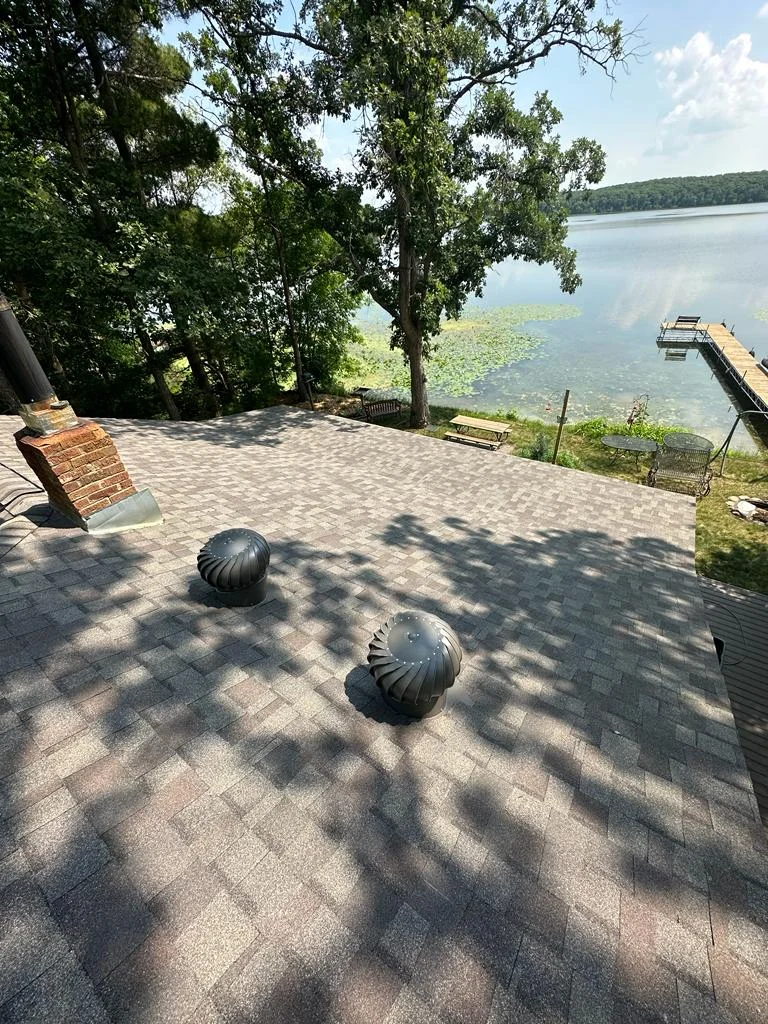Proper roof ventilation is essential for maintaining the integrity and comfort of your home. Here’s why it matters and how it can benefit you:
When your roof is well-ventilated, it helps keep your home’s temperature stable, reducing the strain on your HVAC system and making your living space more comfortable. It prevents moisture buildup, which can lead to mold, wood rot, and insulation damage. Additionally, proper ventilation extends the lifespan of your roof by mitigating the effects of heat and moisture, enhances energy efficiency, and reduces the risk of ice dams in colder climates.
Key Benefits of Proper Roof Ventilation
- Regulates Temperature
Good ventilation helps keep your attic from becoming a furnace in the summer and an icebox in the winter. This regulation ensures a more stable indoor temperature, reducing the workload on your HVAC system and keeping your home comfortable year-round.
- Prevents Moisture Buildup
Ventilation allows moisture to escape from your attic, preventing condensation that can lead to mold growth, wood rot, and structural damage. Moisture buildup can also affect your insulation, reducing its effectiveness.
- Extends Roof Lifespan
Excessive heat and moisture can cause roofing materials to deteriorate faster. Proper ventilation helps extend the lifespan of your roof by reducing the risk of damage caused by these factors.
- Improves Energy Efficiency
By maintaining a balanced attic temperature, proper ventilation can improve your home’s energy efficiency. This can lead to lower heating and cooling costs, as your HVAC system won’t have to work as hard to maintain a comfortable indoor temperature.
- Reduces Ice Dams
In colder climates, proper roof ventilation helps prevent the formation of ice dams. Ice dams occur when warm air from the attic melts snow on the roof, which then refreezes at the eaves. This can lead to water damage and leaks. Ventilation helps keep the attic cooler, reducing the risk of ice dams.
Types of Roof Ventilation
- Ridge Vents
Ridge vents are installed along the peak of the roof and allow hot air to escape from the attic. They are effective and blend in with the roofline, providing a discreet ventilation solution.
- Soffit Vents
Soffit vents are installed under the eaves of the roof and allow cool air to enter the attic. They work in conjunction with ridge vents to create a continuous flow of air through the attic space.
- Gable Vents
Gable vents are installed on the gable ends of the house. They allow hot air to escape and are often used in conjunction with other types of vents for improved airflow.
- Turbine Vents
Turbine vents, also known as whirlybirds, use wind power to draw hot air out of the attic. They are an effective and energy-efficient option for improving roof ventilation.
- Powered Attic Vents
Powered attic vents use electricity to actively remove hot air from the attic. They can be effective in areas with little wind but do require a power source and can increase energy costs.
Conclusion
Proper roof ventilation is essential for maintaining the health and efficiency of your home. It regulates temperature, prevents moisture buildup, extends the lifespan of your roof, improves energy efficiency, and reduces the risk of ice dams. By choosing the right type of ventilation for your home and ensuring it is properly installed, you can protect your roof and enhance your home’s overall comfort and performance. For professional advice and installation services, contact S.A.M. Shingles & More. Our experienced team is dedicated to ensuring your roof is properly ventilated and maintained.


